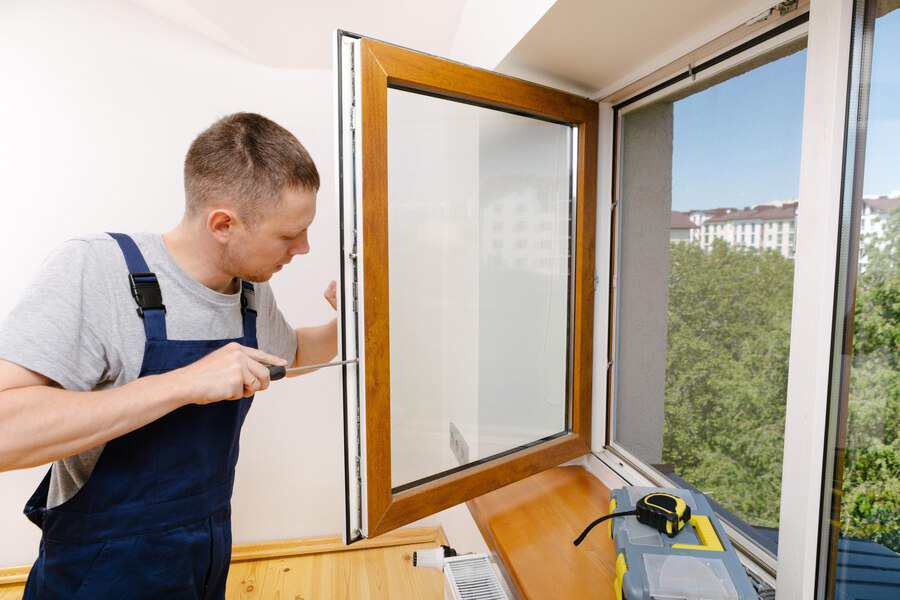
Top Trends in Window Replacement
In the realm of home improvement, window replacement stands out as a transformative upgrade that enhances both aesthetics and functionality. As technology and design continue to evolve, so do the trends in window replacement. Today, homeowners are increasingly opting for energy-efficient windows that not only reduce utility bills but also contribute to a greener environment. These windows often feature advanced materials like low-emissivity glass and insulated frames, which enhance insulation and minimize heat transfer. Another notable trend is the rise of smart windows, integrating with home automation systems to offer unprecedented convenience and control over lighting and privacy. Beyond functionality, contemporary designs emphasize sleek, minimalist frames that maximize natural light and offer expansive views. Whether you’re looking to enhance your home’s energy efficiency, embrace modern technology, or simply update its appearance, staying informed about the latest trends in window replacement ensures you make choices that enhance both comfort and value in your living space.
Energy-Efficient Windows
Energy-efficient windows are essential components in modern architecture, offering a myriad of benefits from cost savings to environmental sustainability. These windows are designed to minimize the energy loss typically experienced through standard windows, providing better insulation and enhancing the overall comfort of indoor environments. Below are eight key aspects of energy-efficient windows, each expanded with detailed information.

Low-E Glass Coatings
Low-emissivity (Low-E) glass coatings are one of the most significant advancements in window technology. These coatings are microscopically thin and transparent, reflecting heat while allowing light to pass through. They reduce energy loss by up to 50%, helping to keep homes warmer in the winter and cooler in the summer. Low-E coatings can be applied to different surfaces of the glass to optimize thermal performance based on the local climate and building orientation.
Double or Triple Glazing
Double or triple-glazed windows consist of two or three panes of glass separated by an insulating gas, such as argon or krypton. This configuration significantly reduces heat transfer compared to single-pane windows. The additional layers of glass and gas create barriers that trap air, thus enhancing thermal insulation and reducing energy costs. Triple glazing offers even better insulation but may come at a higher initial cost.
Gas Fills
The space between the panes of double or triple-glazed windows can be filled with inert gases like argon or krypton. These gases are denser than air, providing superior insulation and reducing the window’s overall thermal conductivity. Gas fills can improve the thermal performance of windows by up to 30%, contributing to a more energy-efficient home.
Warm Edge Spacers
Warm edge spacers are used to separate panes of glass in double or triple-glazed windows. Traditional spacers made of aluminum conduct heat and cold, leading to energy loss and condensation. Warm edge spacers, made from materials with lower thermal conductivity, such as silicone foam or stainless steel, reduce thermal bridging, minimize condensation, and improve the window’s overall thermal performance.
Frame Materials
The choice of frame material significantly impacts the energy efficiency of windows. Materials like vinyl, wood, fiberglass, and composite offer better insulation compared to traditional aluminum frames. Vinyl frames are popular due to their excellent thermal performance and low maintenance requirements. Wood frames provide good insulation but require regular maintenance. Fiberglass frames offer high durability and thermal performance, making them an excellent choice for energy-efficient windows.
Smart Windows
Smart windows represent a significant leap forward in building technology, offering dynamic control over light and heat entering a building. These innovative windows adjust their properties in response to external stimuli such as light, temperature, or electrical input. They enhance comfort, reduce energy consumption, and contribute to the overall sustainability of buildings. Here are eight key aspects of smart windows, each elaborated with detailed information.
Electrochromic Technology
Electrochromic smart windows can change their tint in response to an electric current. This technology allows users to adjust the transparency of the window, controlling the amount of light and heat that passes through. In bright conditions, the window can darken to reduce glare and heat gain, while in dim conditions, it can become clear to maximize natural light. This dynamic control improves indoor comfort and reduces reliance on artificial lighting and air conditioning.
Thermochromic Technology
Thermochromic smart windows respond to temperature changes. They become tinted when exposed to high temperatures, blocking out excess heat, and revert to a clear state when temperatures drop. This self-regulating feature helps maintain a stable indoor temperature, reducing the need for heating and cooling systems. Thermochromic windows are particularly beneficial in regions with significant temperature fluctuations.
Photochromic Technology
Photochromic smart windows adjust their tint based on the intensity of sunlight. Similar to sunglasses, these windows darken when exposed to bright sunlight and lighten when the light intensity decreases. This automatic adjustment helps manage solar gain and glare, improving indoor comfort without requiring manual intervention. Photochromic windows are ideal for spaces with varying light conditions throughout the day.
Liquid Crystal Technology
Liquid crystal smart windows use liquid crystal molecules suspended between layers of glass. When an electric current is applied, the crystals align to allow light to pass through; when the current is off, the crystals scatter light, creating a frosted appearance. These windows provide instant privacy control while still allowing light to enter the space. They are commonly used in office buildings, bathrooms, and meeting rooms where privacy is needed on demand.
Suspended Particle Devices (SPD)
SPD smart windows contain suspended particles within a film that can align or scatter in response to an electric field. When the electric field is applied, the particles align, making the window transparent. When the field is off, the particles scatter, darkening the window. SPD technology provides precise control over light transmission, enhancing energy efficiency and comfort. These windows can be used in various applications, including skylights, automotive windows, and residential buildings.
Black Window Frames
Black window frames have become a popular choice in modern architecture due to their sleek and timeless appeal. These frames can dramatically enhance the aesthetic of both interior and exterior spaces, complementing various design styles from contemporary to traditional. Below are key points highlighting the benefits and considerations of black window frames.
- Aesthetic Appeal: Modern and Elegant: Black frames offer a clean, sophisticated look that enhances the visual appeal of any building.
Versatile Design: They complement a wide range of architectural styles, including industrial, modern, and farmhouse.
- Contrast and Definition: Highlight Views: Black frames create a striking contrast with surrounding walls and outdoor views, drawing attention to the windows. Frame the Outdoors: They effectively frame outdoor scenery, making views appear more pronounced and vivid.
- Maintenance: Less Noticeable Dirt: Darker frames are less likely to show dirt and grime compared to lighter frames, reducing the need for frequent cleaning. Durability: Often made from robust materials like aluminum or fiberglass, black frames tend to be durable and long-lasting.
- Interior Design Impact: Statement Feature: Inside the home, black frames can serve as a bold design element, adding character and style to any room. Neutral Compatibility: Black pairs well with most interior color schemes, making it a versatile choice for various décor styles.
Conclusion
Staying updated with the top trends in window replacement can significantly enhance both the aesthetic appeal and energy efficiency of your home. Whether you’re considering switching to energy-efficient windows, embracing minimalist designs, or exploring the versatility of smart windows, these trends reflect a growing emphasis on sustainability, functionality, and innovation in home improvement. By choosing to upgrade your windows with these trends in mind, you not only enhance the comfort and style of your living spaces but also contribute to long-term savings and environmental responsibility.
For further inquiries or to get started on your window replacement project in Akron, Ohio, contact EZ Window Solutions of Akron at +1 330-368-2260. Our expert team is dedicated to providing tailored solutions that meet your needs, ensuring seamless installation and customer satisfaction. Don’t hesitate to reach out for a consultation and discover how our expertise can transform your home’s windows into a modern and efficient asset.


Write a Comment